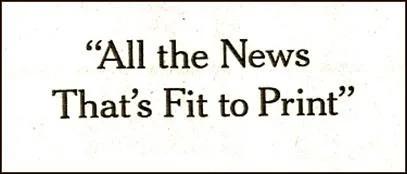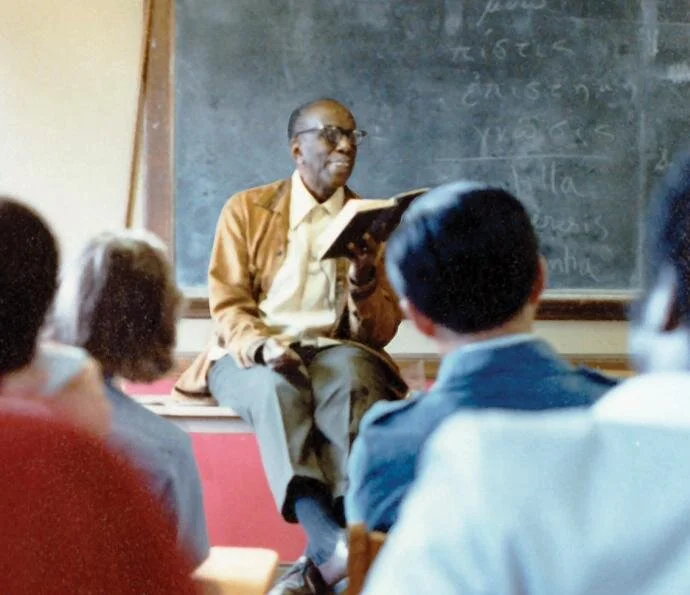Friday Reflection: Mapping the Landscape of Change, Part II
I. When I wrote the first of three essays on change in the Episcopal Church for the October 30 Friday Reflection, I based the essay on the mid-October release of the 2019 Parochial Report from the Episcopal Church Office for Public Affairs, as well as on a detailed annotated summary of the Report from the Episcopal News Service (ENS) published after the Report. The first essay was meant to be an introduction to the issue of change, and how churches have been managing or perhaps failing to manage, in what is now a year-long pandemic.
II. In the meantime, the period between then and now, a picture has emerged that is captured with a set of headlines from the morning paper: “Jobless Claims Jump, Threatening Recovery Amid Worsening Virus;” “As Surge Spreads, No Corner of Nation Is Spared.” You will have your own headlines and perhaps your own stories behind those headlines. As if the surge and all that goes with it is not enough, we have the debris from the election of 2020 that will not diminish when the president-elect takes over. Indeed, the rubble will likely increase, and we could be even more bewildered and uncertain about what’s ahead. Even now, weeks after the election, we are perhaps inclined toward more darkness and dread about going forward and we ask ourselves, “will this ever be over”?
III. Whenever ”this” is over, what will remain are the consequences of a pandemic that has forever changed our lives and, most likely, every institution, however big or small, of which we are a part.
One institution many of us have been part of for much of our lives is, of course, the church. And it is this church, our church, the Episcopal Church, that will have had its practices, if not some of its policies and observances, changed when “this” is over…whether we like it or not. The two reports I wrote about in the Reflection of October 30 all but guarantee this.
IV. As my writing here has unfolded, I am aware that the purpose of this essay is meant to be more informational than personal, more reportage than criticism. Given how the essay has taken shape, I am also aware, especially in the coming season of Advent and the new church year, that it is important to document what the Episcopal Church is doing about itself. This is a time of waiting and becoming, and a recognition that, in the waiting is the becoming. And as you will discover later in this essay, the Episcopal Church is working very hard to “do something.” And here, I am reminded of Dorothy Day’s comment that “the older I get the more I feel that faithfulness and perseverance are the greatest of virtues,” because Advent is about cultivating more faithfulness and perseverance. Advent is also a time of preparation, suggesting that this year Advent 2020, may be a time when we prepare for our lives after the Nativity, of course, but also our lives after the pandemic.
V. I have been reading Will Willimon for years and have been especially interested in his “Lectionary Sermon Resource” series in which he has written about the texts of all the Sundays of the church year, as well as some major feasts. This includes the cycle of year A, year B and year C. Willimon, a retired Methodist Bishop of the North Alabama Conference of the United Methodist Church, a professor of the practice of Christian ministry at Duke University and the former dean of the University’s Chapel, seems never to have stopped writing and in the six volumes of his Lectionary Sermon Resource, one can find elements not only of all of his books, but also thoughtful and insightful commentary on the large number of books he has read. Here’s a very timely Willimon commentary on our matter at hand: “An American bishop has written a book, Why the Church Must Change or Die. (Willimon is referencing the then Episcopal Bishop of Newark, John Shelby Spong’s book from 1998) Poor old church, so out of step, so discordant with the tune of the times. People are always accusing the church of being old-fashioned, antiquarian. You can see their point. Our preachers dress in the fashion of centuries long past. The music is not on the top 10. And the Bible—this old, very old book with its words and old ideas. I admit that I have been chagrined about the ‘Seven Last Words of the Church.’ (‘We never did it that way before.’) Sometimes our traditionalism gets the best of us. We ossify, petrify, and die. Many of our mainline Protestant denominations have been closing many more churches than they have been opening for some decades now.” (from Lectionary Sermon Resource, Year A, Part 2, p.251)
VI. Willimon’s reflection seems to me to both acknowledge and describe where our church is right now, even though he was writing several years before 2020 and the pandemic.
VII. And in this period between the then and now, what should appear—could we say providentially?_--but a book from the publishing arm of the Episcopal Church, Church Publishing Incorporated, entitled We Shall be Changed: Questions for the Post-Pandemic Church. This slim volume (94 pages), is structured around five “Conversations,” each with a set of essays by different authors; there are 17 essays. The conversations are presented by way of different perspectives: Conversation One: Distancing and Deepening; Conversation Two: Liturgy and Longing; Conversation Three: Hard Choices and Helping Hands; Conversation Four: Inequality, Marginalization—and Renewal; and Conversation Five: Leadership—Challenge and Change.
VIII. Mark Edington, the editor of We Shall be Changed, has wisely included a set of questions for each conversation. I believe he intends these conversations—and the questions--to be a map for our reading and reflecting during Advent, especially since the book has been released in the weeks preceding this important season in the church year.. And because individual reflection on what it might mean to actually map “the landscape of change” in the Episcopal Church is so important, I want to include the questions here:
For Conversation One: “How might we turn this time of distancing into a time of deeper spirituality—and how might we keep that deeper conversation with God in the regathered church? How might the virtual inform—or be—the actual future of the church”?
For Conversation Two: “What have we learned from having to create new ways of worship about the worship we have been offering? Are there ideas or themes we should be careful not to lose”?
For Conversation Three: “What questions about financial structures and sustainability will emerge from this time of isolation to confront parishes sand judicatories? Is self-help the only option”?
For Conversation Four: “How can we address constructively the inequality in access to resources within the church laid bare by the variety of responses to the COVID pandemic? What responsibility do well-resourced communities and institutions have in helping poor and marginalized churches keep their communities tended and gathered”?
For Conversation Five: ”What has the COVID pandemic taught us about the leaders and structures we have—and the leaders and structures we need” ? (We Shall be Changed, pp.xvi-xvii)
IX. We Shall Be Changed: Questions for the Post-Pandemic Church is a most unexpected gift just now and, what’s more, it’s affordable. (copies are available from https://www.churchpublishing.org/weshallbechanged and from Amazon.) The book comes at such an important season as Advent, a time during which we prepare for the coming of the Christ who is already here.
The issues of the future of the Episcopal Church will be with us for a long time and Advent is a well -chosen time to become acquainted with such issues and so many vital questions. I will offer a third essay on the subject for Friday, December 11. In the meantime, we can begin our Advent reflections on this coming Sunday, November 29, the first Sunday of Advent and the day our church celebrates the life and work of Dorothy Day who died on November 29, 1980, 40 years ago. And we can look forward to Suzanne Glover Lindsay’s Friday Reflection for next week (December 4) when she writes on our patron, Saint Stephen, and how his life and ministry might speak for us now.
-Father Peter









